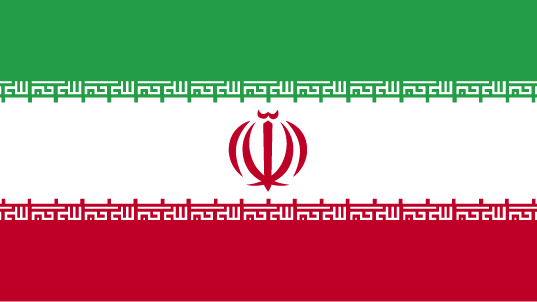Expectations were low for this year’s UNFCCC climate negotiations in Doha, Qatar (COP 18), which concluded on Saturday 8th December. It was scheduled to be a “finalise-the-rules” type of COP, rather than one focused on large, political deals that went into the early hours of the morning. Key issues on the table included finalising the rules for the Kyoto Protocol’s second commitment period; concluding a series of decisions on transparency, finance, adaptation, and forests (REDD+); and agreeing on a work plan to negotiate a new legally binding international climate agreement by 2015. The emissions gap was also front-and-centre, as the newUNEP Gap Report showed that countries are further away than even a year ago from the goal of keeping global average temperature rise below 2°C.
In the end, countries were successful in making progress, but only incrementally. The lack of political will was breathtaking, particularly in light of recent extreme weather events.
Here’s a look at what happened across nine key issues that were on the table:
1) Durban Platform
Along with the continuation of the Kyoto Protocol, the Durban Platform was the star of 2011’s COP 17. Two main components make up the Platform: increasing ambition immediately and negotiating a new legally binding international climate agreement by 2015 for the post-2020 time period.
COP 18 continued with these issues. In regards to increasing ambition before 2020, some countries – such as the Dominican Republic and Lebanon – did come forward with ambitious new pledges to reduce emissions. This was a welcome surprise, but the hope that Gulf region countries would take such a step unfortunately never came to fruition.
In order to try to build pressure for greater ambition, the Secretary General will host a Heads of State summit in 2014. Hopefully this will inspire countries to put more on the table by then. This summit corresponds with an important review of implementation under the Convention and the Kyoto Protocol, as well as the release of the IPCC’s Fifth Assessment Report.

Since 2005, countries have been negotiating in two tracks – the Kyoto Protocol and the Long-term Cooperative Action (LCA) group. As of Doha, those two tracks are closed – importantly, countries can now focus their full attention negotiating a new 2015 agreement under the Durban Platform. The basic outline of the agreement details three core components – legally binding, widest possible participation by all Parties, and staying below 2°C – even possibly 1.5°C. In Doha, countries agreed that 2013 should focus on a few key issues. They agreed to submit their positions on items like what other agreements the UNFCCC can learn from; what the scope, structure, and design of the agreement should be; and importantly, which principles should guide the agreement. This latter point enables a discussion on equity (see below), which remains a core principle and discussion in these talks. There will also likely be additional sessions in 2013, enabling countries to go deep and figure out how they will move forward together.
2) Kyoto Protocol
At COP 17 in Durban, the EU agreed to a second commitment period for the Kyoto Protocol (KP2), but there was no time to finalise all the rules. In Doha, the rules for that second commitment period were finally agreed upon, allowing it to move forward for another eight-year period (2013-2020). While countries who have joined this second commitment period (including the EU, Australia, Switzerland, and Norway) only contribute 15% of global emissions, this is an important step in that it maintains the only legally binding instrument under the UNFCCC.
With the new legal arrangement, these countries will be able to begin implementing their new commitments from January 1, 2013 without any gaps. KP2 also features an ambition trigger, which requests that KP2 Parties revisit and increase their commitments by 2014 (rather than 2015) in line with the 25-40% emissions reductions called for by the IPCC 4th Assessment Report. This issue will be considered at a high-level ministerial roundtable in 2014. In addition, developing countries were granted an increase of the “Share of Proceeds,” a means to use a percentage of the revenue generated by carbon market mechanisms to help developing countries meet the cost of climate change adaptation.
For non-KP2 Parties (e.g. Canada, Japan, Russia, New Zealand), negotiators agreed to restrict those Parties’ eligibility to the Protocol’s flexible market mechanisms. In other words, although they can “participate” in clean development mechanism (CDM) projects, they cannot “transfer” or “acquire” the resulting units; only KP2 countries can trade such units. Another key issue was how many “surplus of emission allowances” a country could carry over from the first to the second commitment period without jeopardising the environmental integrity of the market. Countries decided to further restrict the trading and retirement of units generated from the flexible market mechanisms. This means that although a country will be allowed to carry over 100% of its surplus, it must happen under the following conditions:
- Any surplus will be put into a new emission allowance account called the “Previous Period Surplus Reserve;”
- A country will only be able to use this allowance if it exceeds its allowed emission (or assigned amount), and if its new emissions target is more ambitious than in the previous period; and
- There is a limit to the number of emission allowances (units) countries can trade.
In addition, many countries stated publicly in Doha that they do not plan to purchase any such units.
While it is important to have the Kyoto Protocol moving forward – even with a smaller group of countries than under the first period – the key question now is how the Protocol’s structure and rules will impact the new negotiation track and how much this model will influence the post-2020 architecture. More












